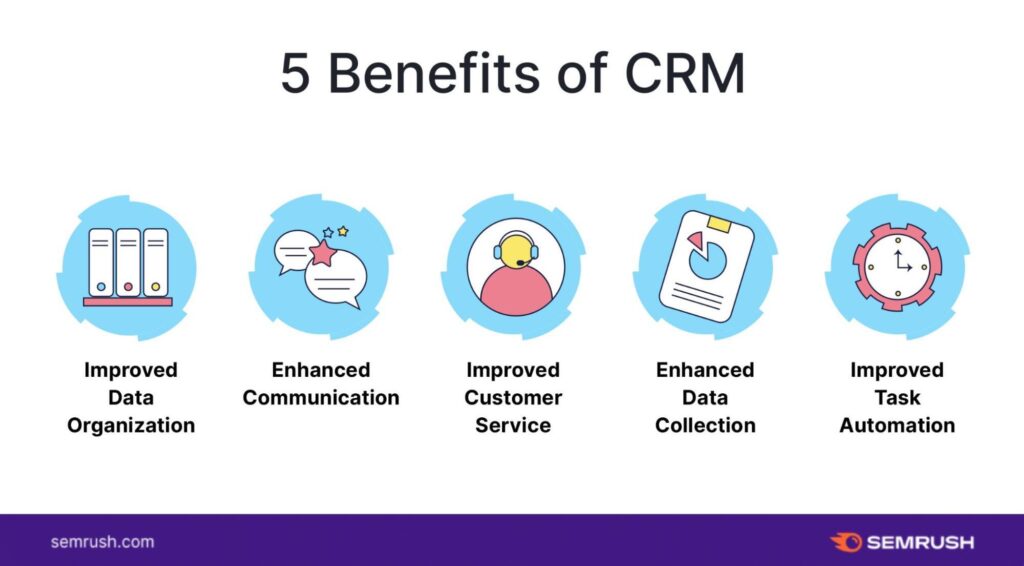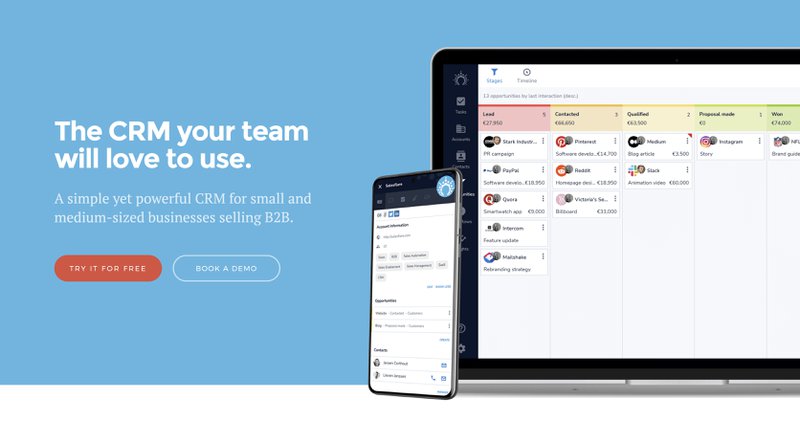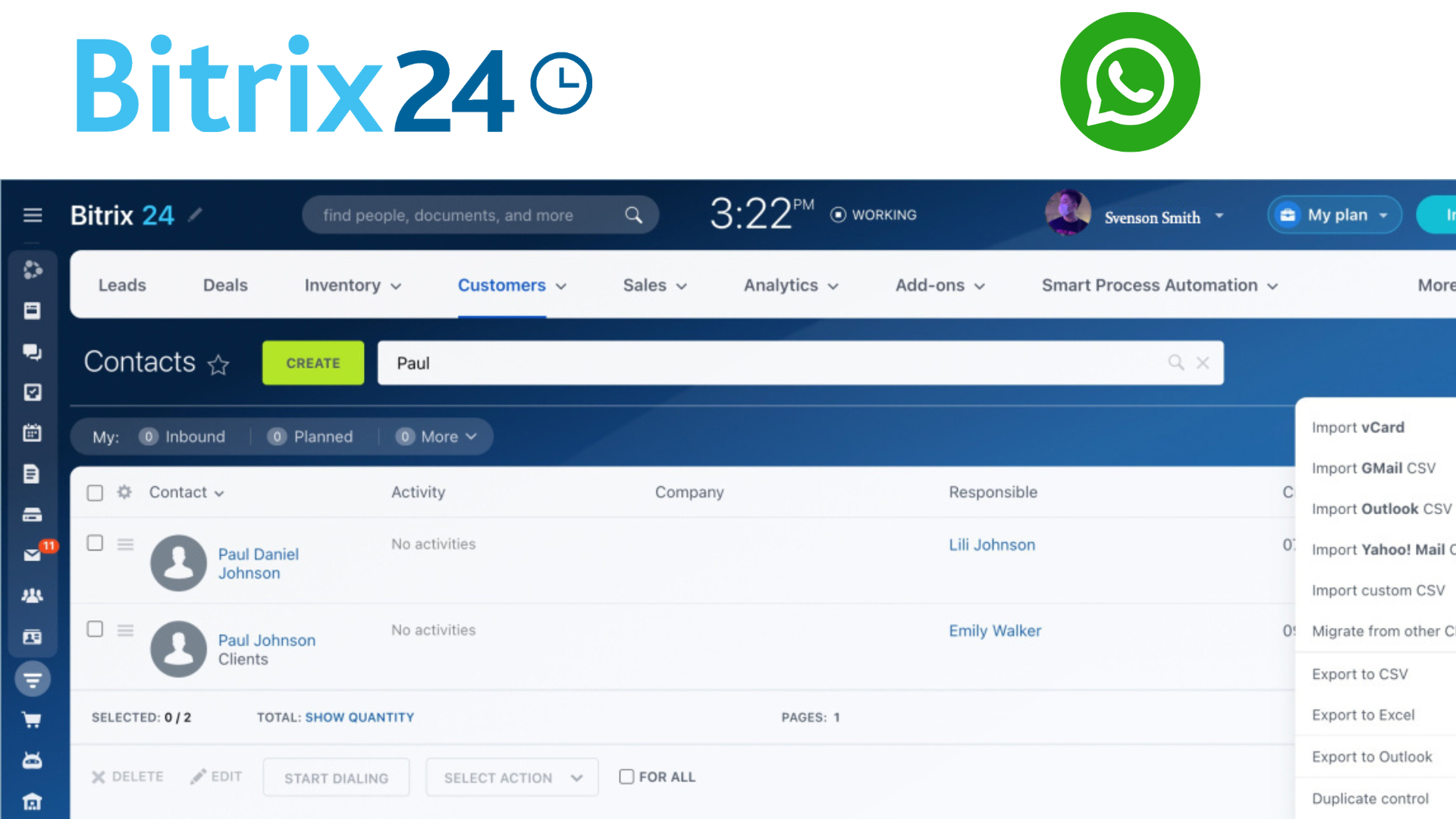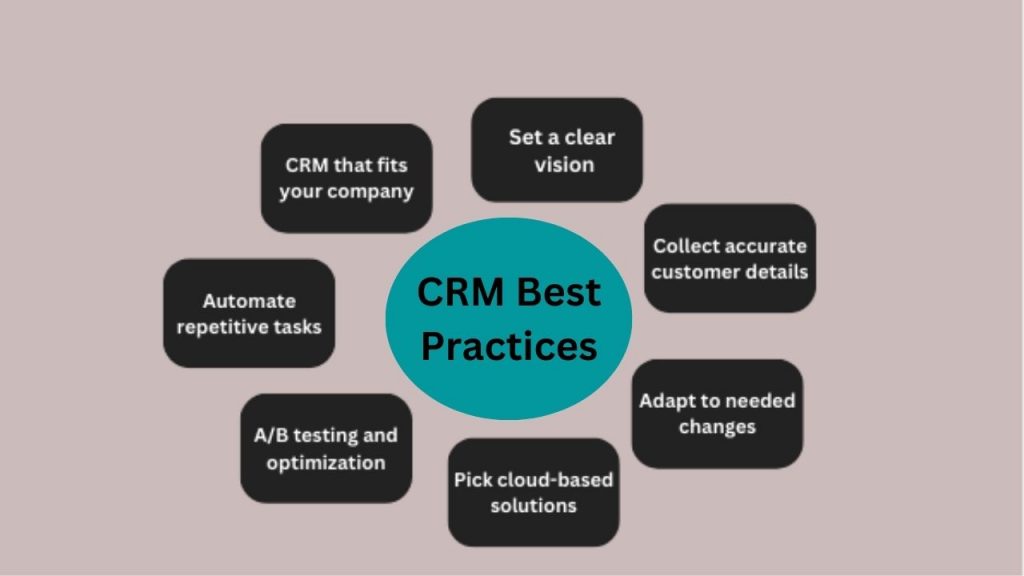
CRM Marketing for Beginners: Your Complete Guide to Customer Relationship Management
So, you’re diving into the world of Customer Relationship Management (CRM) marketing? Excellent choice! In today’s business landscape, understanding and leveraging CRM is no longer a luxury; it’s an absolute necessity. This comprehensive guide is tailored specifically for beginners like you, providing a clear and concise roadmap to navigate the often-complex world of CRM. We’ll cover everything from the fundamental concepts to practical implementation strategies, ensuring you have the knowledge and confidence to succeed.
What is CRM Marketing? A Beginner’s Definition
Let’s start with the basics. CRM marketing is a strategy that focuses on managing and analyzing customer interactions and data throughout the customer lifecycle. The primary goal? To improve business relationships with customers, drive sales growth, and enhance customer retention. Think of it as building a strong, lasting bond with your customers, one interaction at a time.
At its core, CRM marketing uses technology – typically a CRM software platform – to:
- Collect and organize customer data (contact information, purchase history, interactions, etc.)
- Analyze this data to understand customer behavior, preferences, and needs
- Use this knowledge to personalize marketing efforts and improve customer experiences
- Automate marketing tasks, saving time and resources
- Track and measure the effectiveness of marketing campaigns
In simple terms, CRM marketing is about putting the customer at the center of your business strategy. It’s about understanding them, anticipating their needs, and providing them with exceptional experiences that keep them coming back for more.
Why is CRM Marketing Important? The Benefits Explained
You might be wondering: why should I bother with CRM marketing? The answer is simple: it offers a wealth of benefits that can significantly impact your business’s bottom line. Let’s explore some of the key advantages:
1. Enhanced Customer Relationships
CRM marketing allows you to build stronger, more meaningful relationships with your customers. By understanding their needs and preferences, you can tailor your communication and offerings to resonate with them on a personal level. This leads to increased customer loyalty and advocacy.
2. Improved Customer Retention
Retaining existing customers is often more cost-effective than acquiring new ones. CRM helps you identify at-risk customers, address their concerns proactively, and provide them with exceptional service, increasing the likelihood that they’ll stick around.
3. Increased Sales and Revenue
By understanding your customers’ needs and preferences, you can identify upselling and cross-selling opportunities, leading to increased sales and revenue. CRM also helps you streamline your sales process, making it easier for your sales team to close deals.
4. Enhanced Marketing Efficiency
CRM marketing enables you to target your marketing efforts more effectively. By segmenting your customer base and personalizing your messaging, you can improve your campaign performance and get more bang for your marketing buck.
5. Better Data and Insights
CRM systems provide valuable data and insights into your customers’ behavior, preferences, and needs. This information can be used to make data-driven decisions about your marketing strategy, product development, and customer service.
6. Streamlined Processes and Automation
CRM systems automate many repetitive marketing tasks, such as email marketing, lead nurturing, and social media posting, freeing up your time to focus on more strategic initiatives.
7. Improved Customer Service
CRM allows you to provide better customer service by giving your support team quick access to customer information, enabling them to resolve issues faster and more efficiently.
Key Components of a CRM Marketing Strategy
A successful CRM marketing strategy involves several key components working together seamlessly. Here’s a breakdown of the essential elements:
1. Customer Data Collection and Management
The foundation of any CRM strategy is the collection and management of customer data. This involves gathering information from various sources, such as website forms, email interactions, social media, and sales transactions. The data should be accurate, up-to-date, and organized in a way that’s easy to access and analyze. This includes:
- Contact Information: Name, email address, phone number, etc.
- Demographics: Age, location, gender, etc.
- Purchase History: Products purchased, dates of purchase, amounts spent.
- Interactions: Emails opened, website visits, support tickets, social media engagement.
- Preferences: Product interests, communication preferences.
2. Customer Segmentation
Once you’ve collected customer data, the next step is to segment your customer base. This involves dividing your customers into groups based on shared characteristics, such as demographics, purchase history, or behavior. Segmentation allows you to tailor your marketing efforts to specific groups, increasing the relevance and effectiveness of your messaging. Common segmentation strategies include:
- Demographic Segmentation: Grouping customers based on age, gender, location, income, etc.
- Behavioral Segmentation: Grouping customers based on their actions, such as website visits, purchase history, or email engagement.
- Psychographic Segmentation: Grouping customers based on their values, interests, and lifestyles.
- RFM Segmentation: Grouping customers based on Recency, Frequency, and Monetary value of their purchases.
3. Marketing Automation
Marketing automation involves using software to automate repetitive marketing tasks, such as email marketing, lead nurturing, and social media posting. Automation saves time, improves efficiency, and allows you to personalize your marketing efforts on a larger scale. Common automation workflows include:
- Welcome Emails: Automatically sending a welcome email to new subscribers.
- Lead Nurturing: Sending a series of emails to nurture leads through the sales funnel.
- Abandoned Cart Emails: Automatically sending emails to customers who have abandoned their shopping carts.
- Behavior-Based Triggers: Sending emails based on customer actions, such as website visits or product views.
4. Personalized Communication
Personalization is key to effective CRM marketing. It involves tailoring your communication and offerings to individual customers based on their preferences, behavior, and needs. Personalization can include:
- Personalized Email Marketing: Addressing customers by name and sending targeted emails based on their interests.
- Personalized Website Content: Displaying different content to different customers based on their past behavior.
- Product Recommendations: Recommending products based on a customer’s purchase history or browsing behavior.
- Personalized Offers: Offering discounts or promotions based on a customer’s needs and preferences.
5. Campaign Management
CRM systems allow you to plan, execute, and track your marketing campaigns. This includes defining your target audience, setting campaign goals, creating marketing materials, and tracking campaign performance. Key elements of campaign management include:
- Campaign Planning: Defining your campaign goals, target audience, and key messages.
- Campaign Execution: Creating and distributing marketing materials, such as emails, social media posts, and website content.
- Campaign Tracking: Monitoring campaign performance metrics, such as open rates, click-through rates, and conversion rates.
- Campaign Optimization: Making adjustments to your campaigns based on performance data to improve results.
6. Reporting and Analytics
CRM systems provide valuable reporting and analytics capabilities. This allows you to track your marketing performance, measure the effectiveness of your campaigns, and gain insights into your customers’ behavior. Key metrics to track include:
- Customer Acquisition Cost (CAC): The cost of acquiring a new customer.
- Customer Lifetime Value (CLTV): The predicted revenue a customer will generate over their lifetime.
- Conversion Rates: The percentage of customers who complete a desired action, such as making a purchase.
- Customer Retention Rate: The percentage of customers who remain customers over a specific period.
- Return on Investment (ROI): The profitability of your marketing campaigns.
Choosing the Right CRM Software for Beginners
Selecting the right CRM software is crucial for the success of your CRM marketing efforts. There are many options available, each with its own features, pricing, and complexity. Here’s what to consider when choosing a CRM for beginners:
1. Ease of Use
For beginners, ease of use is paramount. Choose a CRM with a user-friendly interface, intuitive navigation, and clear instructions. Look for a system that offers drag-and-drop functionality, pre-built templates, and helpful tutorials.
2. Features
Consider the features you need to achieve your marketing goals. Start with the essentials, such as contact management, lead management, email marketing, and reporting. As your needs evolve, you can always upgrade to a more advanced CRM. Look for features like:
- Contact Management: Storing and organizing customer data.
- Lead Management: Tracking and nurturing leads through the sales funnel.
- Email Marketing: Sending targeted email campaigns.
- Sales Automation: Automating sales tasks, such as follow-up emails.
- Reporting and Analytics: Tracking and measuring campaign performance.
- Integration with other tools: Integration with other tools such as email marketing platforms, social media platforms, and e-commerce platforms.
3. Scalability
Choose a CRM that can grow with your business. Make sure the system can handle an increasing number of contacts, users, and data. Consider the pricing structure and whether it’s scalable as your business expands.
4. Pricing
CRM software pricing varies widely. Consider your budget and choose a CRM that offers a pricing plan that fits your needs. Some CRMs offer free plans for a limited number of users or contacts, while others offer paid plans with more features and storage.
5. Integrations
Consider whether the CRM integrates with the other tools you use, such as email marketing platforms, social media platforms, and e-commerce platforms. Integrations can streamline your workflows and improve efficiency.
6. Customer Support
Make sure the CRM provider offers excellent customer support. Look for options like online documentation, tutorials, email support, and phone support. Having access to responsive support can be invaluable, especially when you’re just starting out.
Popular CRM Options for Beginners
Here are a few popular CRM options that are well-suited for beginners:
- HubSpot CRM: A free, user-friendly CRM with a wide range of features, ideal for small businesses and startups.
- Zoho CRM: A feature-rich CRM with a variety of pricing plans, suitable for businesses of all sizes.
- Freshsales: A sales-focused CRM with a simple interface and powerful features.
- Salesforce Essentials: A simplified version of Salesforce, designed for small businesses.
- Pipedrive: A sales-focused CRM with a visual interface and a strong focus on deal management.
Implementing CRM Marketing: A Step-by-Step Guide
Now that you have a solid understanding of CRM marketing and the key considerations, let’s walk through the implementation process step-by-step. This will help you get started on the right foot.
Step 1: Define Your Goals and Objectives
Before you start implementing CRM, it’s essential to define your goals and objectives. What do you want to achieve with CRM marketing? Examples include:
- Increase sales revenue
- Improve customer retention rates
- Enhance customer satisfaction
- Streamline sales processes
- Gain a deeper understanding of your customers
Having clear goals will help you choose the right CRM, prioritize your efforts, and measure your success.
Step 2: Choose and Set Up Your CRM Software
Based on your research and evaluation, select the CRM software that best fits your needs and budget. Once you’ve chosen your CRM, set it up by:
- Creating user accounts for your team members.
- Customizing the CRM to fit your business processes.
- Configuring integrations with other tools.
Step 3: Import Your Customer Data
Import your existing customer data into your CRM. This data can come from various sources, such as spreadsheets, email databases, and other software systems. Ensure that your data is clean, accurate, and organized. Consider the following:
- Data Migration: Plan how you’ll move your data from existing systems.
- Data Cleaning: Remove duplicates and correct errors.
- Data Formatting: Ensure all data is in the correct format for your CRM.
Step 4: Segment Your Customer Base
Divide your customer base into segments based on shared characteristics, such as demographics, purchase history, or behavior. This will allow you to tailor your marketing efforts to specific groups. Identify the most important segments for your business.
Step 5: Create Marketing Campaigns
Develop marketing campaigns based on your customer segments and goals. This may involve creating email campaigns, social media posts, and website content. When creating campaigns, consider:
- Campaign Objectives: Define the specific goals of your campaigns.
- Target Audience: Identify the specific customer segments you’re targeting.
- Messaging: Craft compelling messages that resonate with your target audience.
- Call to Action: Include clear calls to action that encourage customers to take the desired action.
Step 6: Automate Your Marketing Efforts
Use your CRM’s automation features to streamline your marketing tasks. This may include setting up automated email workflows, lead nurturing sequences, and social media posting. Set up automated workflows for:
- Welcome Emails: Automatically send a welcome email to new subscribers.
- Lead Nurturing: Send a series of emails to nurture leads through the sales funnel.
- Abandoned Cart Emails: Automatically send emails to customers who have abandoned their shopping carts.
- Behavior-Based Triggers: Send emails based on customer actions, such as website visits or product views.
Step 7: Track and Analyze Your Results
Monitor your campaign performance and track key metrics, such as open rates, click-through rates, and conversion rates. Use the data to identify what’s working and what’s not. Analyze the data regularly to make informed decisions about your marketing strategy. Generate reports for:
- Campaign Performance: Track the performance of your marketing campaigns.
- Customer Behavior: Analyze customer behavior to gain insights.
- Sales Performance: Track sales performance to measure the impact of CRM.
Step 8: Optimize and Refine Your Strategy
Continuously optimize and refine your CRM marketing strategy based on your results. Test different approaches, analyze your data, and make adjustments as needed. Always be learning and adapting to improve your results.
CRM Marketing Best Practices for Beginners
To maximize the effectiveness of your CRM marketing efforts, consider these best practices:
1. Focus on Customer Needs
Always put the customer first. Understand their needs, preferences, and pain points, and tailor your marketing efforts to address them. Remember, CRM is about building relationships, not just making sales.
2. Personalize Your Communication
Use customer data to personalize your communication and offerings. Address customers by name, send targeted emails based on their interests, and make personalized recommendations. Personalization is key to building strong customer relationships.
3. Keep Your Data Clean and Up-to-Date
Ensure that your customer data is accurate, up-to-date, and organized. Regularly review and update your data to avoid sending irrelevant or outdated information. This is critical for effective targeting and personalization.
4. Segment Your Audience
Segment your customer base to target your marketing efforts more effectively. Group customers based on shared characteristics, such as demographics, purchase history, or behavior. Segmentation allows you to tailor your messaging and offers to specific groups.
5. Automate Whenever Possible
Use automation to streamline your marketing tasks and save time. Automate email marketing, lead nurturing, and social media posting to improve efficiency and free up your time to focus on more strategic initiatives.
6. Track and Measure Your Results
Track and measure the performance of your campaigns to identify what’s working and what’s not. Use data to make informed decisions about your marketing strategy and continuously optimize your efforts. Regularly analyze key metrics to track your progress.
7. Integrate with Other Tools
Integrate your CRM with other tools, such as email marketing platforms, social media platforms, and e-commerce platforms, to streamline your workflows and improve efficiency. Integrations can help you create a more seamless customer experience.
8. Provide Excellent Customer Service
Use your CRM to provide exceptional customer service. Give your support team quick access to customer information, enabling them to resolve issues faster and more efficiently. This is key to building customer loyalty and advocacy.
9. Train Your Team
Provide adequate training to your team on how to use your CRM software and implement your CRM marketing strategy. Ensure that everyone understands their roles and responsibilities and is equipped to work effectively with the CRM. Train your team on:
- CRM Functionality: Train your team on how to use the CRM software.
- Marketing Strategies: Train your team on the marketing strategies.
- Data Management: Train your team on how to manage customer data.
10. Stay Up-to-Date
The world of CRM marketing is constantly evolving. Stay up-to-date with the latest trends, technologies, and best practices. Continuously learn and adapt to improve your CRM marketing efforts.
Common CRM Marketing Mistakes to Avoid
Even with the best intentions, beginners can make mistakes that hinder their CRM marketing efforts. Here are some common pitfalls to avoid:
1. Not Defining Your Goals
Without clear goals, it’s impossible to measure the success of your CRM marketing efforts. Take the time to define your objectives and track your progress. Set specific, measurable, achievable, relevant, and time-bound (SMART) goals.
2. Poor Data Quality
Inaccurate, incomplete, or outdated data can undermine your marketing efforts. Invest time in cleaning and maintaining your data to ensure its accuracy. Regularly review and update your data to avoid sending irrelevant or outdated information.
3. Ignoring Customer Needs
CRM marketing is about building relationships, not just making sales. Focus on understanding your customers’ needs and preferences and tailoring your communication accordingly. Prioritize customer satisfaction to build loyalty.
4. Overcomplicating Your Strategy
Start simple and gradually add more features and complexity as you become more comfortable with CRM. Don’t try to do too much too soon. Focus on the basics and build from there. Avoid overwhelming yourself and your team.
5. Not Training Your Team
Ensure that your team is properly trained on how to use your CRM software and implement your CRM marketing strategy. Without proper training, your team won’t be able to use the CRM effectively. Provide ongoing training and support.
6. Not Tracking and Measuring Results
Without tracking and measuring your results, you won’t know what’s working and what’s not. Regularly monitor your campaign performance and track key metrics to identify areas for improvement. Analyze your data and make data-driven decisions.
7. Not Personalizing Your Communication
Generic, one-size-fits-all messaging is ineffective. Use customer data to personalize your communication and offerings. Address customers by name and tailor your messaging to their interests and preferences. Personalization boosts engagement.
8. Not Integrating with Other Tools
Without integrations, you’re missing out on opportunities to streamline your workflows and improve efficiency. Integrate your CRM with other tools, such as email marketing platforms, social media platforms, and e-commerce platforms. Integrations can help you create a more seamless customer experience.
9. Choosing the Wrong CRM
Selecting the wrong CRM can lead to frustration and wasted resources. Choose a CRM that fits your needs, budget, and technical capabilities. Research different CRM options and select the one that’s right for your business.
10. Giving Up Too Soon
CRM marketing takes time and effort. Don’t get discouraged if you don’t see immediate results. Stay consistent with your efforts, analyze your data, and make adjustments as needed. Be patient and persistent, and you’ll eventually see positive results.
The Future of CRM Marketing
The field of CRM marketing is constantly evolving, and several trends are shaping its future. Here’s a glimpse into what’s on the horizon:
1. Artificial Intelligence (AI) and Machine Learning (ML)
AI and ML are already transforming CRM marketing. These technologies can analyze vast amounts of customer data to identify patterns, predict customer behavior, and personalize marketing efforts at scale. AI-powered chatbots can provide instant customer support, and ML algorithms can automate complex marketing tasks.
2. Hyper-Personalization
Customers increasingly expect personalized experiences. CRM marketing will continue to focus on hyper-personalization, tailoring communication and offerings to individual customer needs and preferences. This will involve using data analytics and AI to create highly targeted and relevant marketing messages.
3. Omnichannel Marketing
Customers interact with businesses across multiple channels, including email, social media, website, and mobile apps. CRM marketing will embrace omnichannel marketing, providing a seamless and consistent customer experience across all channels. This requires integrating data and communication across all touchpoints.
4. Privacy and Data Security
With increasing concerns about data privacy, CRM marketing will need to prioritize data security and comply with regulations such as GDPR and CCPA. Businesses will need to be transparent about how they collect and use customer data and provide customers with control over their information.
5. Customer Data Platforms (CDPs)
CDPs are emerging as a key technology for CRM marketing. CDPs collect and unify customer data from various sources, providing a single view of the customer. This data can then be used to personalize marketing efforts and improve customer experiences.
6. Voice-Activated CRM
Voice assistants are becoming increasingly popular, and CRM systems are integrating voice-activated features. This allows sales and marketing teams to access customer information and perform tasks using voice commands, improving efficiency and productivity.
In conclusion, CRM marketing is a powerful strategy that can help businesses build stronger customer relationships, drive sales growth, and improve customer retention. By following the guidelines in this beginner’s guide, you can successfully implement CRM marketing and achieve your business goals. Remember to focus on customer needs, personalize your communication, and continuously optimize your strategy. The future of CRM marketing is bright, and by embracing the latest trends and technologies, you can stay ahead of the curve and build a thriving business.


